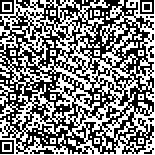| 摘要: |
| [摘要] 目的 探讨经皮胆道镜在重症急性胰腺炎(SAP)继发胰周感染性坏死(IPN)清除术中的应用价值。方法 回顾性分析该院肝胆外科2016年1月至2019年3月采用B超或CT引导下经皮穿刺置管引流术(PCD)窦道逐级扩张使用电子胆道镜直视下清除IPN组织12例患者(观察组),与同期开腹手术IPN清除术10例患者(对照组)进行比较分析。结果 两组患者IPN清除有效率均达100.00%。观察组胰瘘发生率为25.00%,对照组为20.00%,差异无统计学意义(P>0.05)。观察组出血发生率为16.67%,对照组为0.00%,差异无统计学意义(P>0.05)。两组均未见肠瘘发生。观察组术后未见脓腔残留,对照组有4例二次手术后有部分脓腔残留,残留率为40.00%,差异有统计学意义(P<0.05)。观察组住院费用低于对照组,住院时间短于对照组,差异有统计学意义(P<0.05)。两组患者随访最长2年未见复发。结论 经皮胆道镜直视下清创治疗SAP继发IPN具有创伤小、恢复快、反复操作性强、费用低、住院时间短、并发症少等优点,值得临床推广应用。 |
| 关键词: 经皮胆道镜 重症胰腺炎 胰周感染性坏死 组织清除 |
| DOI:10.3969/j.issn.1674-3806.2021.06.14 |
| 分类号:R 576 |
| 基金项目: |
|
| Application value of percutaneous choledochoscopy in removal of severe acute pancreatitis secondary to infected pancreatic necrosis |
|
JIANG Han-cheng, JIANG Shui-ming, ZHOU Min, et al.
|
|
Department of Hepatobiliary and Thyroid Surgery, the Fourth Affiliated Hospital of Guangxi Medical University, Liuzhou 545005, China
|
| Abstract: |
| [Abstract] Objective To investigate the application value of percutaneous choledochoscopy in removal of severe acute pancreatitis(SAP) secondary to infected pancreatic necrosis(IPN). Methods Twelve patients receiving removal of IPN tissues by using ultrasound or computed tomography(CT) guided percutaneous catheter drainage(PCD) and sinus dilation step by step under electronic choledochoscope in the Department of Hepatobiliary Surgery, the Fourth Affiliated Hospital of Guangxi Medical University from January 2016 to March 2019 were collected(the observation group), and their data were retrospectively analyzed. Meanwhile, 10 patients receiving laparotomy for removal of IPN were taken as the control group. The data were compared between the two groups. Results The effective clearance rate of IPN was 100.00% in both groups. The incidence of pancreatic fistula in the observation group was 25.00%, and that in the control group was 20.00%, and the difference was not statistically significant(P>0.05). The bleeding rate of the observation group was 16.67%, and that of the control group was 0.00%, and the difference was no statistically significant(P>0.05). There was no intestinal fistula in the two groups. There was no postoperative residual pus cavity in the observation group. Four cases in the control group had some residual pus cavities after the second operation, with a residual pus cavity rate of 40.00%. There was statistically significant difference in the residual pus cavity rate between the two groups(P<0.05).The hospitalization expenses of the observation group were significantly less than those of the control group(P<0.05), and the hospitalization time of the observation group was significantly shorter than that of the control group(P<0.05). Among the patients in both groups, the longest follow-up was 2 years, but there was no recurrence. Conclusion Debridement under percutaneous choledochoscope to treat SAP complicated with IPN has the advantages of small trauma, quick recovery, easy to operate on the patient repeatedly, low costs, short hospital stay and a few complications, which is worthy of clinical application. |
| Key words: Percutaneous choledochoscopy Severe acute pancreatitis(SAP) Infected pancreatic necrosis(IPN) Tissue removal |

